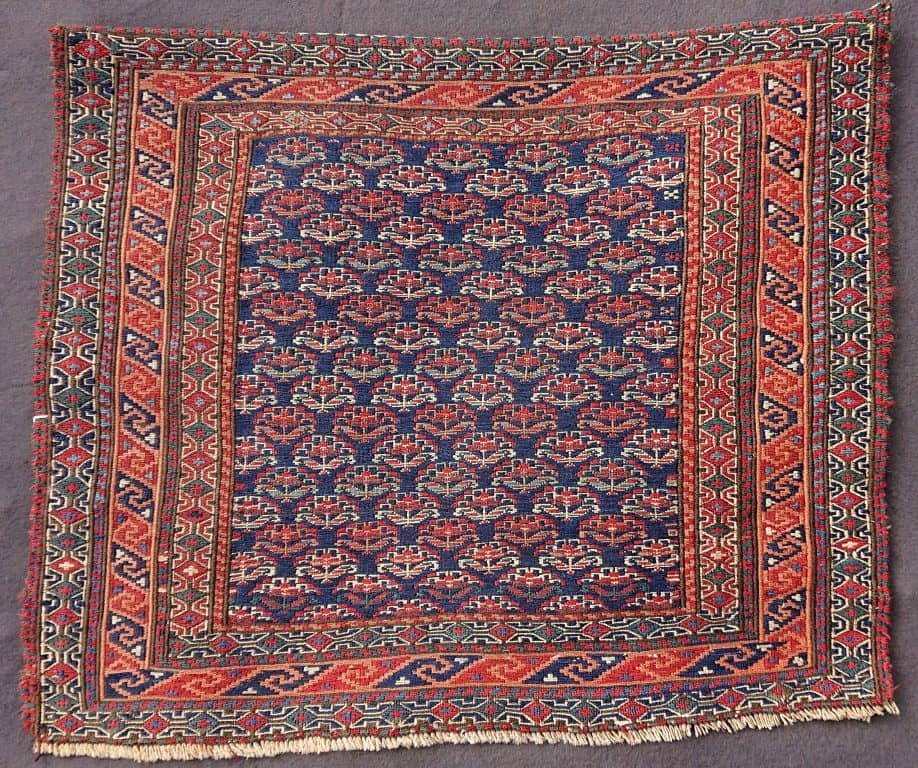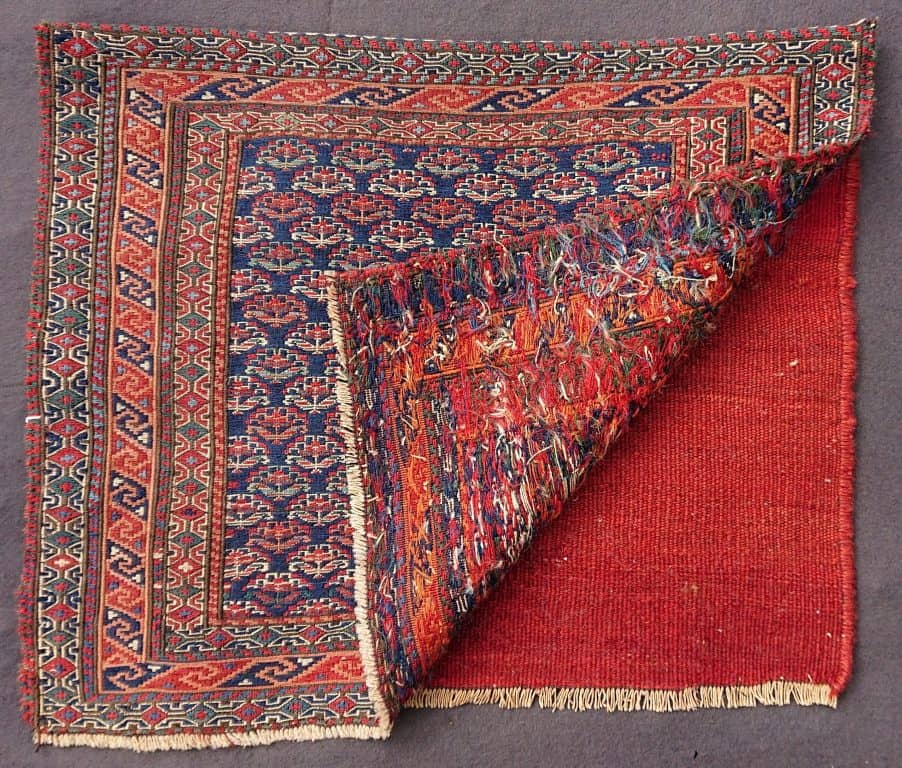19th-century Persian Bidjar Bag
19th-century Persian Bidjar Bag
reference:
7043
dimensions:
52 x 61 cm (99cm long when unfolded)
Description
This 19th-century Persian Kurdish Bidjar bag dates to the second half of that century.
The field is an allover design of flowers in three colour ways: white/red, turquoise/red and orange/blue/red. They are arranged in alternating horizontal rows, which can also be seen as diagonals, on a dark blue ground. The field is enclosed by a series of guard stripes and three main borders, two of which are formed by a chain of interlinked diamonds flanking the central border with an S design. The predominant colour in this latter border is the orange which we find in the field, whereas the flanking borders are held in the red, blue and green/turquoise range that we also find in the field design. In terms of visual effect, this is important since it assures that a fairly busy arrangement of patterns still retains a degree of simplicity and structure, which adds to its attractiveness. John Wertime in his book on soumak bags calls such a field design of florals in these bags “Persianate”, linking it back to an urban tradition of Persian carpets and textiles (Sumak Bags of Northwest Persia & Transcaucasia. London, Laurence King Publishing 1998, page 90. See also plate 42, pages 90-91).
The work is very fine and regular – it is clearly in the hand of a skilled and experienced weaver. The back of the bag is a plain red dyed with dye stuffs derived from the madder root, with lovely variations, or abrash, in the monochromatic kelim. As is typical of many Bidjar flat woven pieces, the weft of the kelim is worked over two warps, giving it a slightly chunky look and handle; this forms an interesting contrast to the fineness of the face on this bag.
The bag is one half of a double-sided bag, or khorjin. It is worked in wool on a wool foundation, and it is in excellent condition.


